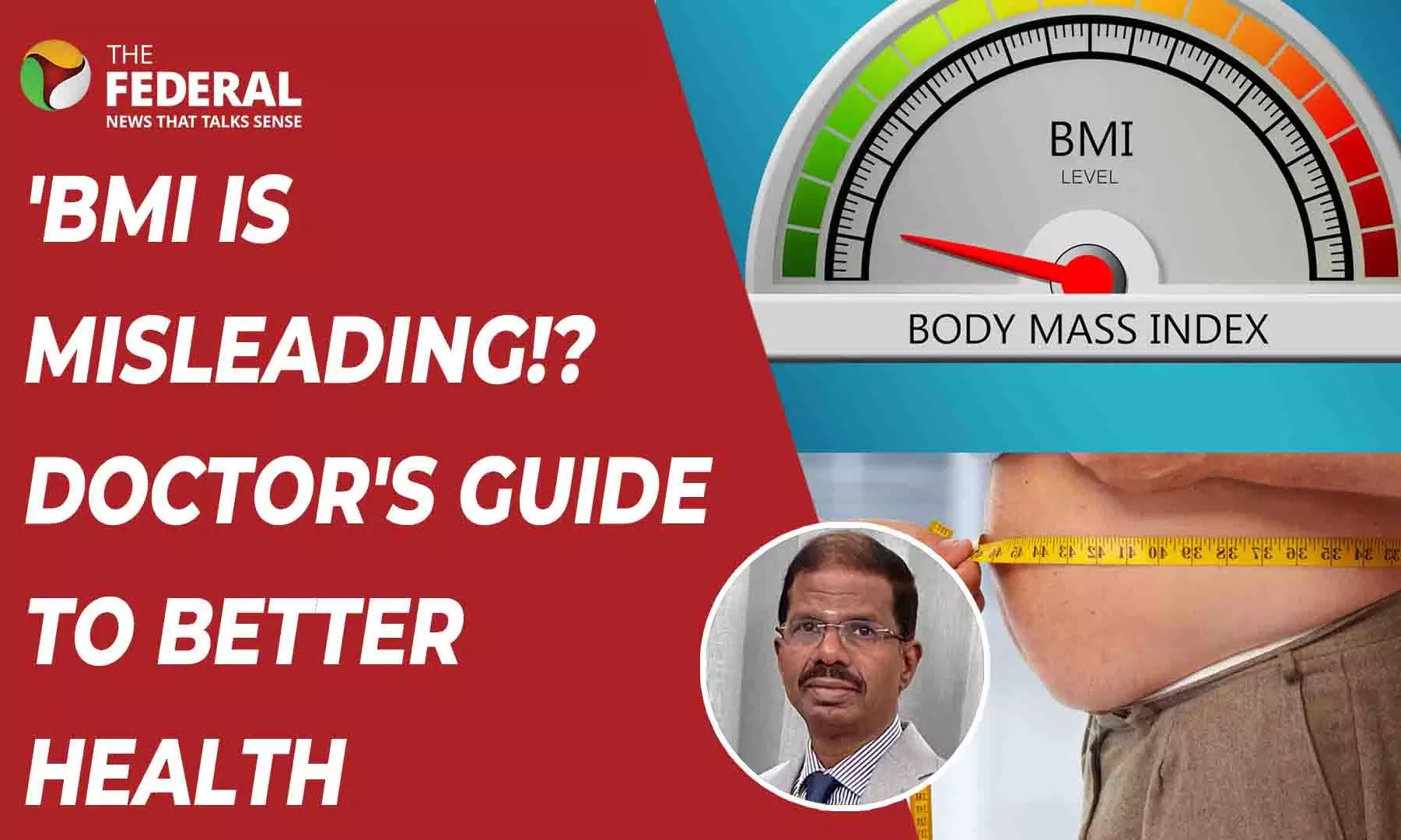
Why you need to stop obsessing over BMI | Top health expert explains
In light of Lancet study revealing limitations of BMI, Dr Swamikannu of MGM Hospitals, Chennai urges India to reconsider how it evaluates obesity, diabetes risk

In light of a recent Lancet study revealing the limitations of BMI, Dr Swamikannu, a prominent diabetes specialist from MGM Hospitals in Chennai, urges India to reconsider its dependence on BMI when evaluating obesity and diabetes risk.
Obesity and Diabetes: The BMI Dilemma
While BMI has long been the standard measurement for assessing obesity, Dr Swamikannu argued that it fails to account for crucial regional differences.
"Indians and Southeast Asians, in general, have smaller body structures and narrower coronary arteries, making them more vulnerable to heart disease and diabetes — even with a normal BMI," he told The Federal. This disparity highlights a critical issue: BMI overlooks significant factors like abdominal fat, which is a major health risk.
The 'thin-fat' phenomenon
Dr Swamikannu pointed out a growing health phenomenon he describes as "thin-fat Indians." These individuals may have a normal BMI but carry substantial fat around their belly, which increases their risk for heart disease and diabetes.
"BMI doesn’t reflect the danger of belly fat," he explained. "This hidden risk is what makes waist circumference a crucial metric, especially for Southeast Asians."
For people at risk, waist circumference provides a more accurate measure of obesity. "This simple tool helps identify abdominal fat that BMI misses," Dr Swamikannu emphasised. Waist circumference, he suggests, should be used alongside BMI to offer a more comprehensive risk assessment.
Waist circumference
Dr Swamikannu also stressed the importance of waist circumference in managing diabetes. With new medications targeting obesity, reducing abdominal fat is increasingly seen as a key factor in successful treatment.
"The latest obesity drugs are designed to reduce belly fat, and studies show they work best when waist circumference is considered," he said.
This growing recognition of waist circumference underscores the need to rethink traditional metrics. "We must start factoring in waist circumference alongside BMI to provide better care and improve outcomes for those at risk," Dr Swamikannu advocated.
The role of AI
Looking toward the future, Dr Swamikannu is optimistic about the role of Artificial Intelligence (AI) in revolutionizing health measurements. "AI has the potential to change the way we assess health risks," he said.
By combining BMI, waist circumference, and other factors, AI can help identify at-risk individuals early and enable more personalized healthcare interventions.
He believes that AI will be a game-changer in healthcare. "AI will help us look at the bigger picture—beyond BMI — by predicting health risks more accurately and helping us take action earlier," he said.
Call for change
In conclusion, Dr Swamikannu urges India to adopt waist circumference as a standard tool in health assessments.
"BMI alone is not enough; waist circumference should be added to provide a fuller picture of an individual's health," he said. "With the right tools, we can better manage obesity, diabetes, and other health risks."
The content above has been generated using a fine-tuned AI model. To ensure accuracy, quality, and editorial integrity, we employ a Human-In-The-Loop (HITL) process. While AI assists in creating the initial draft, our experienced editorial team carefully reviews, edits, and refines the content before publication. At The Federal, we combine the efficiency of AI with the expertise of human editors to deliver reliable and insightful journalism.

